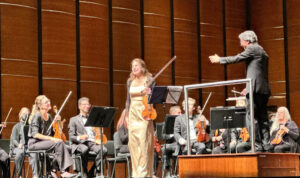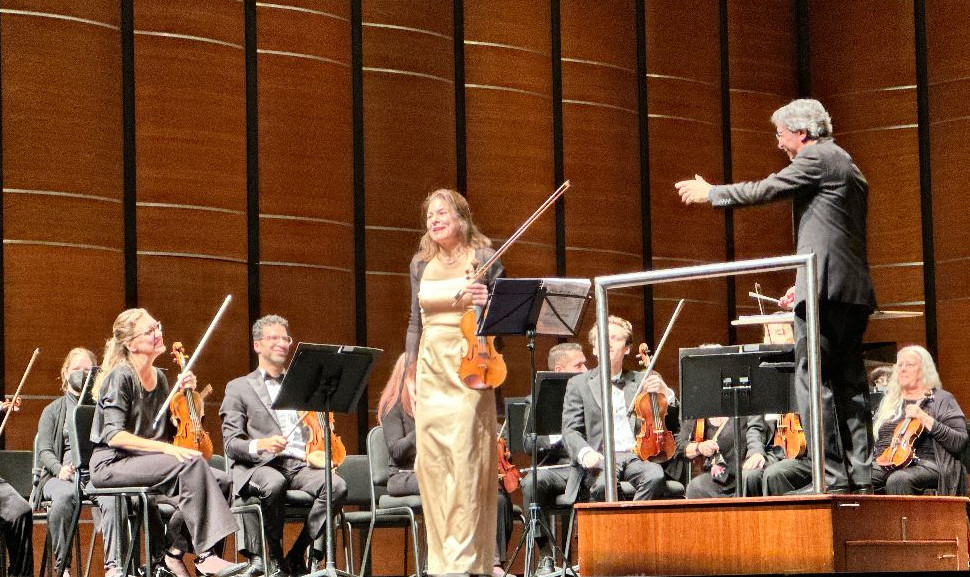The latest outing by our Austin Symphony Orchestra featured the violinist Elisabeth Kufferath. It was an inspired choice to celebrate the music of Albert Dietrich (1829-1908), a little-known German composer whose main claim to fame was his relationship with Robert Schumann and Johannes Brahms.
Compositions by all three were included in the concert, an all-German celebration dubbed by the Symphony as an Oktoberfest of Sound. Despite his rather obscure celebrity, Dietrich’s Violin Concerto in D Minor (Opus 30, first performed in 1874) was the star of the show.
Any violinist would find this a challenging piece but Kufferath is actually the world expert on it for two reasons. First, her great-grandfather was the cellist in Dietrich’s orchestra. Second, she has made the only commercial recording of this violin concerto (you can hear it on YouTube). Kufferath is professor of violin at the Hochschule for Music, Theatre and Media, in Hannover, Germany.
In three movements, it begins with a deeply expressive passage, which signals to the audience at once this is no ordinary violin concerto. It is redolent of the tenderest pathos – projecting a Romantic strain directly from the thoughts evoked when one reads Novalis: “The new world is born of pain, and in tears the ashes are dissolved into a drink of eternal life.” A solo violin passage here allows Kufferath to establish her own transcendent path forward to conclude the allegro. This work by Dietrich is one of the finest compositions ever written as a vehicle to develop the ideals of Romanticism that are latent in a violin.
In the second movement, the pathos of the first is (unexpectedly) ratcheted up a notch to a heart-breaking solemnity. The achingly beautiful melody is developed almost entirely by the violin, with the orchestra offering little more than a background for it. It closes with an ineffable quality rarely achieved by any composer. The third movement is in a much lighter vein than the first two. It achieves a delicacy in the melody that moves it along at a jaunty pace to a final ending.
The concert opened with the Overture to Schumann’s only attempt to create a German Romantic opera. It was named Genoveva (Op. 81), and dates from 1848. The premiere was a bit of a flop, closing after just 3 performances. While the opera is not so great, the Overture is am eminently earnest piece, punctuated by heraldic sounds from the brass section. The melody becomes ever more urgent as it ends on a rousing, triumphant note. Really very fine.
The concert concluded with Symphony No. 1 (Op. 68) by Brahms. The first movement exudes a strident attitude from the outset, clearly presaging this is no mean musical outing. Brahms is making a statement here that the traditional classical symphonic form (outdated when this symphony was premiered in 1876) is not only very much alive, but ready to be revered above all Romantic-style newcomers. The second movement is a light reprieve from the 1st, and could be used as a soundtrack to a film of the sunset over a sylvan landscape. Alas, the final two movements are somewhat meandering and slightly boring, but the Austin Symphony Orchestra, under the baton of Peter Bay, did their usual superb job with even less-than-stellar material.
Next up is Mendelssohn’s Violin Concerto in E minor, at the Long Centre, on Nov. 18 and 19.
www.austinsymphony.org

